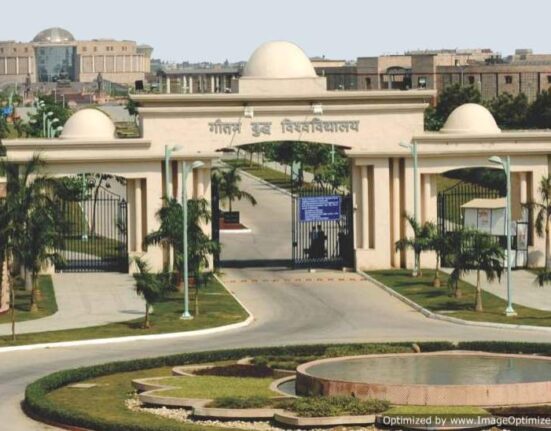This article, “Legal Procedure of HDFC-IDFC Merger” is written by Himanshu Rawat a 1st year Law student at CCSU.
Introduction
Under the Section 44A of the Banking Regulation Act, of 1949, RBI has the authority to authority to give an order to the voluntary merger of two banking entities. This Merger has to go for approval; firstly it must get the majority of two-thirds of the shareholders/stakeholders of each merging bank. This is the first step of merging the banks as per the Banking Regulation Act, of 1949. In the second step, this proposal will be forwarded to RBI for clearance. Participation is a must, either the person or by proxy has to attend the public meeting convened to review the proposal. This whole process comes under Section 44A of the Banking Regulation Act, of 1949.
In today’s time, it has been a landmark day for our organization part as we marked the culmination of a very special journey; the completion of the largest merger in corporate India between HDFC Ltd and HDFC Bank, called HDFC Twins. It’s the coming together of two excellent brands, which have each distinguished themselves in their respective sectors. After the HDFC twins, the board approved for IDFC First Bank plans merger with IDFC. The board of IDFC First Bank has approved the merger of IDFC Ltd and IDFC Financial Holding Company itself through a scheme of amalgamation. This is the second major merger deal in the financial space after HDFC Bank and Housing Development Finance Corporation. This merger is subject to approvals from the Reserve Bank of India, SEBI[1], the Competition Commission of India, the National Company Law Tribunal, the stock exchanges, and all other statutory and regulatory authorities, besides the shareholders of both the listed firms. IDFC Chairman, Anil Singhvi said the merger is the last phase of IDFC’s corporate restructuring and will help create a financial services provider that offers seamless delivery of services to customers.
It will ensure compliance with RBI rules, requiring the non-operative financial holding company’s shareholding. This is the bank’s promoter, to be a minimum of 40% of the paid-up voting equity capital, locked in for five years from the commencement of the bank’s business. It will also augment operational efficiency for the merged entity and create synergies for the company’s shareholders. The deal, valued at Rupee 127.02 per share, represents a 24% premium to IDFC’s previous closing price. The swap ratio comes up to 155:100, which means that investors will get 155 shares of IDFC First Bank for every 100 shares held in IDFC. The merger scheme is subject to all requisite approvals from the Reserve Bank, SEBI, Competition Commission, National Company Law Tribunal, the stock exchanges, and shareholders of both entities. It’s expected to be completed in the current financial year, subject to unforeseen circumstances. In March 2023, IDFC Ltd and IDFC Financial Holding Company Ltd appointed Axis Capital Ltd to determine the fairness of the share exchange ratio for the merger. The companies have now completed all stages of corporate simplifications, with the amalgamation with IDFC First Bank being the next step.
IDFC First Bank IDFC merger
The Board of Directors of IDFC First Bank Limited at its meeting held on Monday, July 03, 2023, approved the Scheme of Amalgamation of IDFC Limited with IDFC First Bank. The Share Exchange Ratio for the amalgamation of IDFC Limited with IDFC First Bank shall be 155 equity shares of the face value of ₹10 each fully paid-up of IDFC First Bank for every 100 equity shares of the face value of ₹10 each fully paid-up of IDFC Limited. IDFC First Bank said its board had approved its merger with IDFC Ltd., the latest in a wave of consolidation in India’s financial sector.
This comes just days after a $40 billion mega merger between India’s largest private lender HDFC Bank collaboration Housing Development Finance Corporation, the country’s biggest mortgage lender. Vaidyanathan said, that as a country, India is on a “massive trajectory,” which holds immense growth potential for the merged entity in the near term. We are insiders of this country and we can see for ourselves on a day-to-day basis how the country is growing,” he told CNBC’s “Street Signs Asia” on Tuesday. For India’s credit market, let me say that a 15% credit growth would be a fair expectation shortly. And for our bank, a 25% credit growth would be a fair expectation with stable asset quality.
Legal Procedure of Mergering
According to the Guidelines, under the terms of Section 44A of the Banking Regulation Act of 1949, RBI has the discretionary authority to authorize the voluntary merger of two banking entities.
These powers do not apply to the voluntary merger of a banking company with a non-banking company, which is governed by Sections 232 to 234 of the Companies Act of 2013, under which the National Company Law Tribunal (“Tribunal”) must approve the merger’s plan.
Additionally, the Banking Laws (Amendment) Act of 2011’s Section 2A clarify that no banking firm is subject to the Competition Act’s rules. Chapter XV of the Companies Act of 2013 mandates, as was previously required solely by the Companies Act of 1956, that any planned merger between a bank and a non-banking entity must first have the consent of the HC and then the RBI to be implemented.
Merger of an NBFC with a banking company
Concerning the approval of the scheme, in addition to the considerations listed above, the board should also consider the following aspects:
- Determine whether any RBI/SEBI regulations have been violated or are likely to be violated by the NBFC, and if so, ensure that they are complied with before the scheme is approved.
- Whether “Know Your Customer” norms are complied with by the NBFC for all its accounts which will become accounts of the banking company;
- Whether the NBFC has used credit facilities from banks or financial institutions, and if so, whether the loan agreements require the NBFC to obtain the consent of the bank or financial institution concerned for the proposed merger.
Shareholders’ Approval
Before the shareholders’ approval, the boards of directors of the two banking companies must accept the draft scheme. The following factors should be taken into account while considering such approval:
- The value of the proposed merged company’s assets, liabilities, and reserves, and if the proposed incorporation will increase the asset value;
- The type of compensation the merging banking company will provide to the shareholders of the merged company.
- Whether the required amount of due diligence has been done about the proposed merger.
- Whether the swap ratio has been determined by independent valuers and whether such swap ratio is fair and appropriate.
- The shareholding structure of the two banking companies and if, as a result of the merger and the swap ratio, any person’s, entity’s, or group’s ownership of shares in the merged banking company will violate RBI’s policies;
- The planned modifications to the board of directors composition and whether the resulting membership of the board would comply with the RBI Guidelines; and
- The impact on the viability and the capital adequacy ratio of the amalgamating banking company.
If such a scheme is adopted by the required number of shareholders, it must be presented to the RBI for approval, which if granted, will be binding on the relevant banking companies.
In India, the Competition Act of 2002 is the primary statute regulating M&As. This law was enacted primarily to restrict anti-competitive practices and to regulate combinations, such as M&As. Any bank that complies with a loan or investment agreement is excluded from the strict requirements of the M&A clause; nonetheless, the CCI must be notified of the combination within 7 days. 2017 saw the government exclude mergers of nationalized banks from requiring clearance from CCI. The goal was to open the door for quick consolidation in the PSU banking sector. The announcement of this 10-year exemption came as many academics and even some government officials were debating the need of banking sector consolidation, especially among state-run banks.
Conclusion
Finally, we can say that everything comes with positive and negative impacts on our economy. These kinds of merges have advantages and disadvantages too. We can say that we need a strong banking or company system for our economy. These kinds of mergers are a way to gain strong strengths as an individual or group for the benefit of both the banking sector and the company sector. When two banks merge, it will form a new bank with a large power and strength which will boost our economy. It is beneficial for our economy. It also has a negative impact like the prices of products and services will increase. It may also result in a clash in cultures and affect the performance of our company sector
. and affect the performance of the employees. While the financials of both companies have improved, one can only wait and watch how the merger pans out. How it affects the stock prices of both companies also remains to be seen. The merger will lead to simplification of the corporate structure of IDFC FHCL, IDFC Limited and IDFC FIRST Bank by consolidating them into a single entity and will help streamline the regulatory compliances of the aforesaid entities
FAQs[2]
- What are the benefits for the investors?
- Why have the companies decided to merge?
- Why this is not done before if it is beneficial?
References
- https://www.khuranaandkhurana.com/
- https://www.ahlawatassociates.com/
[1] Securities and Exchange Board of India
[2] Frequently Asked Questions







Leave feedback about this